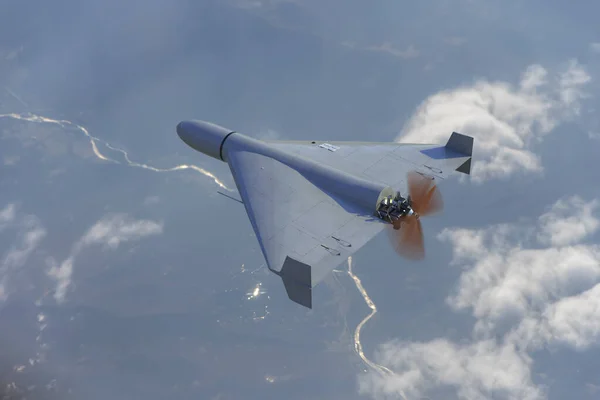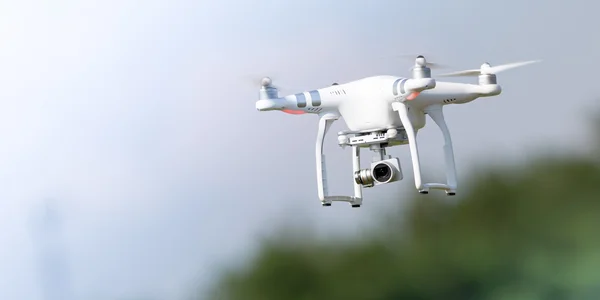
What happens when the world’s most advanced militaries realize their airfields are no longer safe? The answer came sharply into focus after Ukraine’s audacious June 1 drone offensive crippled a significant portion of Russia’s strategic bomber fleeta strike some Russian commentators likened to their own Pearl Harbor. Reaching as far as Siberia, the attack underlined a new reality: the drone age has erased traditional notions of sanctuary.
For U.S. defense planners, the implications were instantaneous. Within months, U.S. Northern Command had staged a high-intensity counter-drone exercise at Minot Air Force Base, the only American installation that hosts both nuclear-capable bombers and ICBMs. The goal was clear: to validate a deployable, AI-enabled C-sUAS team able to protect the nation’s most sensitive strategic assets. The following nine takeaways reveal how this event, combined with battlefield lessons from Ukraine, is reshaping U.S. counter-drone doctrine, base defense posture, and the broader approach to modern air threats.

1. The Trigger: Ukraine’s Longest-Range Drone Strike
On June 1, Ukraine unleashed 117 drones in an operation named “Spider’s Web,” hitting four Russian air bases from the Finnish border to Siberia. Ukrainian intelligence claims 41 aircraft, including such bombers as Tu-95s and Tu-22Ms, were damaged or destroyed at a value of $7 billion. Oksana Markarova, Kyiv’s ambassador to Washington, labeled it “the best example of how innovation can and should work in defense.” The strike demonstrated that even deep-inland strategic assets are vulnerable to long-range, low-cost unmanned systems.

2. Minot AFB: America’s Nuclear Nerve Center
Minot Air Force Base in North Dakota is a peculiar case, as it hosts both B-52H nuclear-capable bombers and nuclear-armed ICBMs. That makes it the perfect target for hostile drone incursions. The USNORTHCOM exercise that took place between October 21–27 involved over 100 aerial targets, testing the base’s ability to respond to swarm and single-drone threats while maintaining nuclear readiness.

3. The C-sUAS Flyaway Kit: A Modular Shield
The newly certified C-sUAS flyaway kit integrates multiple layers of detection and defeat. Components include the Heimdal mobile sentry unit with radar and thermal optics, Wisp AI-enabled wide-area infrared sensors, Pulsar electromagnetic warfare systems, and Anduril’s Anvil drone interceptors. This combination delivers 360-degree coverage, autonomous tracking, and both non-kinetic and low-kinetic defeat options in a single, transportable package.

4. Anvil Interceptors: Precision Hard-Kill Capability
Anduril’s Anvil is a kinetic interceptor weighing about 11.6 pounds, launched from a ruggedized box holding two units. Using the Lattice OS for guidance, it self-navigates toward targets and gives visual confirmation before a human operator grants permission to engage. Other variants include non-kinetic disruptors and the Anvil-M munition for higher-value or faster targets, all offering base commanders a scalable, low-collateral hard-kill option.

5. Legal Authority and Interagency Coordination
Under 10 U.S.C. 130i, installation commanders can defend against drone incursions but must coordinate with the Department of Transportation and FAA. Cmdr. Brian Dudley of USNORTHCOM called rapid revision of a 130i defense plan “critical to the protection of installations experiencing UAS incursions.” The Minot exercise tested not just technology but also the legal and procedural frameworks for real-world engagements.

6. Lessons from Ukraine: Democratization of Air Power
The conflict in Ukraine has brought home the reality that affordable drones have democratized air power. As Air Marshal Johnny Stringer put it, “you could conduct most, if not all, of the airpower roles for the price of a drone, a laptop, and some imagination.” This proliferation enables even resource-limited actors to contest airspace and strike high-value targets, forcing advanced militaries to rethink air defense architectures.

7. Electronic Warfare: The New Air Superiority Contest
Ukraine has reapplied a fully contested electromagnetic spectrum, in which GPS jamming, comms disruption, and signals intelligence are everyday features; both sides have adapted to keep drones flying with mesh networks, frequency agility, and satellite communications. For U.S. forces, it means that counter-drone systems must incorporate EW resilience right from the outset.

8. Countering the Drone Revolution to Preserve Maneuver
U.S. Army planners believe that, rather than emulating the Russian drone-heavy attrition model, America should adopt counterinnovations-integrated air defense, EW, and deception-that will restore freedom of maneuver. This course of action is more in line with the American way of war: rapid armored maneuver made possible by airpower, not massed fires enabled by drones.

9. Continuous Adaptation as a Core Doctrine
As summed up by Air Marshal Stringer: “Better never stops.” The bottom line is that counter-drone capabilities must be tested, refined, and integrated into realistic training as an ongoing process. The Minot drill represented a validation step and not an end-point in an iterative process to keep pace with evolving threats from lone quadcopters to coordinated swarm assaults. The June 1 Ukrainian strike on Russia’s bomber fleet was more than a tactical success-it was a strategic warning.
What the United States has now done in response at Minot AFB reflects a pivot toward agile, layered, and legally grounded counter-drone defenses. In adding both technological innovation to procedural readiness and lessons from Ukraine’s battlefield, U.S. forces are moving to ensure that America’s own “Pearl Harbor” moment remains a cautionary tale, not a lived reality.


